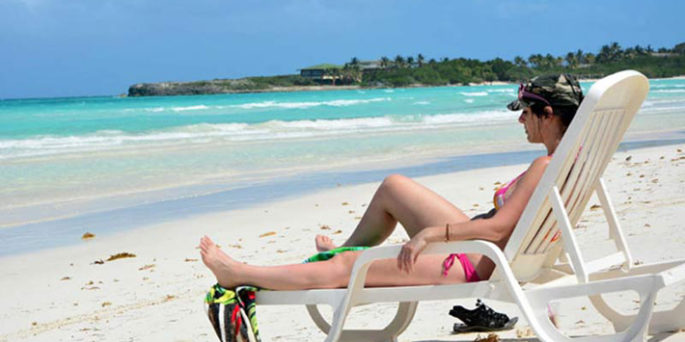
Cuba’s surprising internal tourism boom
National tourism has had meteoric growth in the last years. In 2016, more than 991,122 Cubans stayed in hotels on the island, establishing a record in the country’s tourist history. This figure is even more remarkable if we take into account the rise in prices of tourist services brought about by the avalanche of North American tourists, with lodging prices per room rising by more than 95% on average with respect to the previous year.
This rapid growth took the Cuban tourist industry by surprise. Today the number of national tourists is slightly inferior to the largest international tourist emitter to the island, Canada, which closed the year 2016 with 1,198,917 tourists.
To get an idea of the impact, let’s look at the statistics. In 2008, the number of national tourists that stayed in the hotel chains that operate in dollars was 61,508. However, when in 2009 President Barack Obama lifted restrictions on remittances and travel to Cuba, the effect was immediate: the number of Cubans staying in hotels destined for international tourism grew year after year. In 2016 the number of national tourists was 991,122. This meant a huge growth of 1,511.4%. See Figure 1.
Figure 1. National tourism hosted in hotels, 2010-2016

Two factors have impacted this growth: the increase in Cuban-American travel to the island and the growth of the private sector. The increase in Cuban-American travel has allowed many Cubans on the island to have stays in the hotels invited by their relatives who live in the USA and travel to the island. A study by HCG in 2014 found that 37% of Cuban-Americans who traveled to the island were staying at hotels for at least a weekend with their relatives residing on the island, mainly at Varadero, the keys to the north of Villa Clara, and in Guardalavaca, Holguín. This share has been increasing. Currently it is estimated that about 45% of Cuban-Americans who travel to the island stay in a hotel with their relatives on the island for two or three days.
The growth of the private sector has also increased the purchasing power of hundreds of thousands of Cubans. In 2016 almost 1 million Cubans stayed in the four hotel chains operating in Cuba; 94.15% of them stayed in the chains that manage the highest-priced hotels: Cubanacan (34.58%); Gaviota (33.93%) and Gran Caribe (22.64%). See Figure 2.
Figure 2. Number of national tourists who stayed in hotel chains, 2016

In 2016, a study carried out by HCG that monitored prices of a sample of 209 hotels operated by the Cubanacan, Islazul, Gran Caribe and Gaviota chains, found that the average price per room per night ranged from 91.35 to 226.00 CUC. See Figure 3.
Figure 3. Average annual price per room per night in Cuba hotels chains. 2016

Note: * It includes hotels in the chains Sol Meliá, Iberostar, Accor, NH Hoteles, Be Live Hotels, etc.
Analyzing prices by hotel category for each hotel chain we determined that the Cubanacán Chain had the highest prices in category 2 * hotels, with an average annual price of 96.81 CUC per night. In category 3 *, 4 * and 5 * the highest average prices were for the Gaviota chain, with 148.55, 198.82 and 257.53 CUC, respectively. See Figure 4.
Figure 4. Average annual price per room/night by hotel category in Cuba hotel chains, 2016.

Undoubtedly, in 2016 the prices across the different chains were high, which gives us an idea of how much the purchasing power of this new middle class has grown in recent years.
(From the Havana Consulting Group & Tech)

